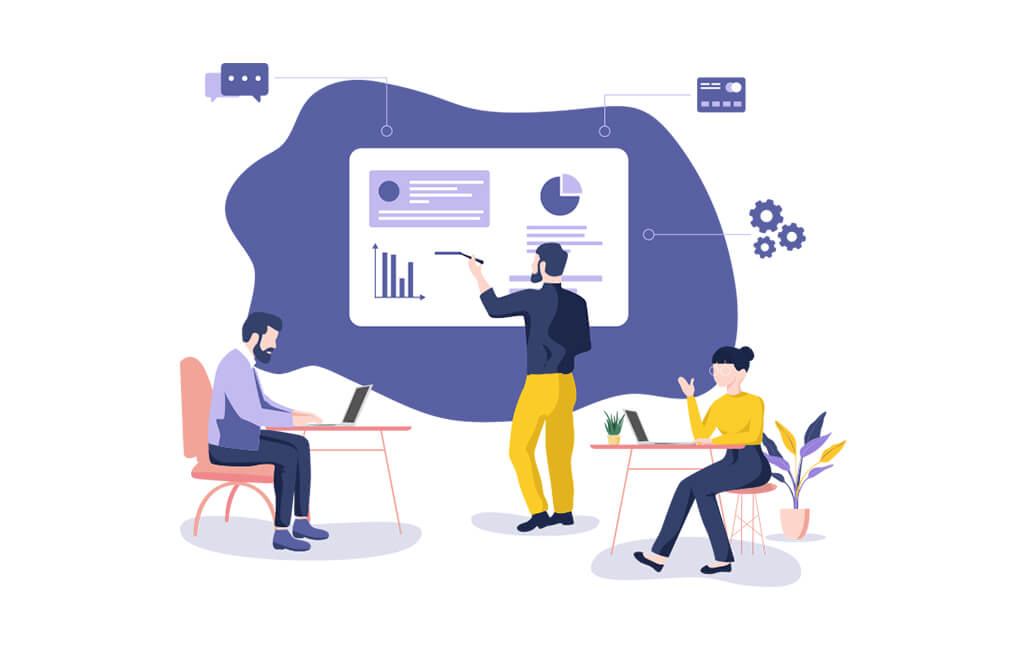What is a Lean Business Model Canvas?
The Lean Business Model Canvas is defined as a visual tool and framework that helps entrepreneurs and business professionals plan and communicate their business ideas, strategies, and models in a concise and structured format. It is derived from the traditional Business Model Canvas, which was popularized by Alexander Osterwalder and Yves Pigneur in their book “Business Model Generation.”
The Lean Business Model Canvas, also known as the Lean Canvas, was created by Ash Maurya as a more streamlined and focused version of the original canvas. It is particularly well-suited for startups and early-stage businesses aiming to iterate and validate their business ideas and strategies quickly. The Lean Canvas emphasizes the key components essential for a business’s success in a simplified one-page format.
Here are the main elements of the Lean Business Model Canvas:
- Problem: This section defines the specific problem or pain point that your product or service aims to address.
- Solution: Describe your solution or product and how it addresses the identified problem.
- Key Metrics: Outline the critical metrics and key performance indicators (KPIs) you’ll use to measure your business’s success.
- Unique Value Proposition (UVP): Explain what sets your product or service apart from competitors and why customers should choose you.
- Unfair Advantage: Highlight any competitive advantages, intellectual property, or unique resources that give your business an edge.
- Customer Segments: Identify your target customer groups, including their characteristics and needs.
- Channels: Describe the marketing and distribution channels you’ll use to reach and serve your customers.
- Customer Relationships: Detail how you plan to build and maintain relationships with your customers.
- Revenue Streams: Explain how you intend to generate revenue and monetize your business.
- Cost Structure: List the key costs and expenses associated with running your business.
The Lean Canvas is designed to be a dynamic tool that can evolve as your business develops. It’s particularly useful for brainstorming, testing hypotheses, and making quick adjustments based on customer feedback and market changes.
Overall, the Lean Business Model Canvas is an essential tool for entrepreneurs and startups to clarify their business ideas, create a shared understanding among team members, and adapt their strategies to navigate the challenges of the business world efficiently.
Learn more: Lean Canvas vs. Business Model Canvas
15 Benefits of Lean Business Model Canvas
The Lean Business Model Canvas offers numerous benefits to entrepreneurs, startups, and organizations looking to develop and refine their business strategies. Some of the key advantages include:
- Simplicity
The Lean Canvas provides a straightforward, one-page framework that distills the essential components of a business model. This simplicity makes it easy to understand and communicate with team members, stakeholders, and investors.
- Focus
It encourages a sharp focus on the critical aspects of the business model, helping entrepreneurs prioritize what really matters and avoid distractions.
- Iterative and Agile
The Lean Canvas is designed to be a dynamic tool, allowing for rapid iterations and adjustments as new insights and information become available. This agility is particularly valuable for startups in rapidly changing markets.
- User-Centered
The canvas emphasizes understanding the problem and customer segments, making it inherently user-centric. This leads to businesses that are more aligned with customer needs.
- Cost-Effective
By forcing entrepreneurs to think critically about their cost structure and revenue streams, the canvas helps in identifying efficient ways to operate and generate revenue.
- Hypothesis Testing
It encourages the formulation of hypotheses about key aspects of the business model, which can then be tested with real-world data and feedback. This approach reduces the reliance on untested assumptions.
- Alignment
The Lean Canvas facilitates alignment within the team and with investors or other stakeholders. It ensures that everyone is on the same page regarding the business model and its components.
- Rapid Decision-Making
The canvas promotes data-driven decision-making by emphasizing the identification of key metrics. This allows for a more informed approach to strategy development and adaptation.
- Risk Mitigation
By explicitly identifying assumptions, risks, and uncertainties, the Lean Canvas helps entrepreneurs take proactive steps to mitigate those risks.
- Scalability
The Lean Canvas can be applied to both small startups and larger organizations. It is scalable and adaptable to various business contexts.
- Time Savings
The Lean Canvas reduces the time spent on extensive business plans and documentation. This means entrepreneurs can get to market faster and start learning from real-world experiences sooner.
- Innovation
The iterative nature of the Lean Canvas encourages innovation and experimentation. It enables businesses to find new and creative solutions to problems.
- Flexibility
It can be used in conjunction with other methodologies, such as the Lean Startup framework or Design Thinking, allowing for a more comprehensive approach to product development and business strategy.
- Transparency
The Lean Canvas makes it easier to share your business model and vision with potential investors, partners, and stakeholders.
- Cost Control
By focusing on cost structure, businesses can identify areas where they can optimize and reduce expenses, leading to improved profitability.
The Lean Business Model Canvas is a valuable tool that helps entrepreneurs and organizations create a more focused, adaptable, and customer-centric approach to developing and refining their business models. It encourages a mindset of continuous learning, innovation, and data-driven decision-making.
Learn more: What is a Lean Canvas?
Most Recent Posts
Explore the latest innovation insights and trends with our recent blog posts.













